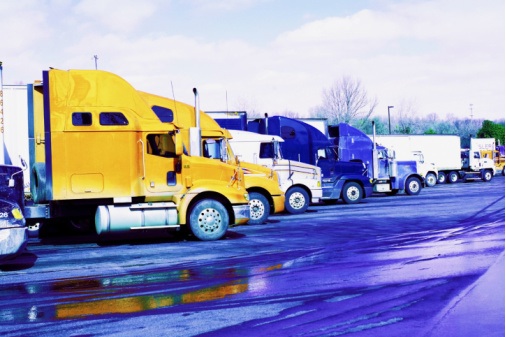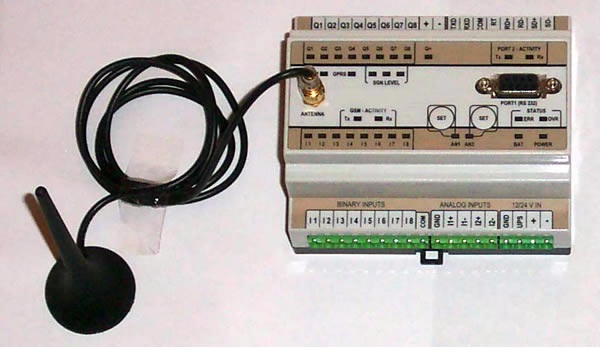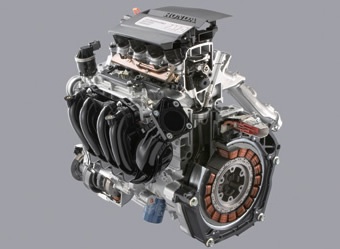
Features
Handling Systems
Structures & Equipment
Don’t be ‘fuel-ish’ while shipping
March 26, 2009 By 4Refuel Canada
 March 26, 2009 — Here are some proven ways to reduce fuel consumption, cut greenhouse gas emissions and lower your fuel costs.
March 26, 2009 — Here are some proven ways to reduce fuel consumption, cut greenhouse gas emissions and lower your fuel costs.
 March 26, 2009 — Here are some proven ways to reduce fuel consumption, cut greenhouse gas emissions and lower your fuel costs.
March 26, 2009 — Here are some proven ways to reduce fuel consumption, cut greenhouse gas emissions and lower your fuel costs.
Fuel is now the highest operating cost for most shippers, as it has recently overtaken labour as #1. Understandably, as fuel prices continue to rise, everyone wants to reduce their exposure to rising costs. In order to help businesses put a leash on fuel costs, we’ve compiled our top ten ways to reduce fuel consumption and therefore fuel costs.
1. Awareness is the key – With proper training, drivers can easily improve fuel efficiency. Eco-driving and fuel-saving strategies make a huge difference to efficiency, economy and emissions. Hard acceleration, speeding and idling are the biggest causes of fuel waste. Seasoned drivers should take a driver training refresher course to learn new skills for the road.
2. Decrease idling – Letting an engine idle more than three minutes causes expensive damage that harms efficiency, shortens engine life and increases maintenance costs. But it also quickly consumes fuel allocated to servicing a delivery route. Excessive idling can add 50 per cent to fuel costs and shorten the life of engine oil by 75 per cent. 
3. Start off slower – The first one off the line pays more for fuel – a lot more. Countless studies by universities, highway authorities and engine manufacturers prove it. Jackrabbit starts save less than three minutes over 60 minutes of driving, but end up using 40 per cent more fuel and increase toxic emissions by 400 per cent!
4. Slow down – It’s not just dangerous, speeding wastes fuel. Highway speeds over 100 km/h drastically impact fuel efficiency. Cars travelling at 120 km/h instead of 100 km/h use 20 per cent more fuel to cover the same distance. Trucks travelling at 120 km/h instead of 100 km/h use 50 per cent more fuel – and that really adds up on the fuel bill. But they also emit 100 per cent more carbon monoxide, 50 per cent more hydrocarbons, and 31 per cent more nitrogen oxides. If drivers aren’t endangered enough by speeding, there are all the toxic emissions, too.
5. Lose weight – Carrying excess weight places unnecessary strain on your vehicle’s engine and greatly affects its fuel efficiency. Removing as little as 100 pounds from your vehicle can significantly improve your gas mileage.
 6. In the case of a small business, try using a Fuel Management system – Fuel management systems are the most powerful way to lower fuel costs and increase fleet productivity. Systems range from basic onsite refuelling (which saves up to 20 minutes per day, per vehicle), to automated fuel tracking (which details every litre pumped into every vehicle by date, time, quantity and fuel type), to telematics (which measures overall fuel efficiency, vehicle performance, tracks fuel waste due to idling, speeding etc., and identifies critical areas to improve efficiency and reduce fuel costs and emissions). The technology exists. Look into it.
6. In the case of a small business, try using a Fuel Management system – Fuel management systems are the most powerful way to lower fuel costs and increase fleet productivity. Systems range from basic onsite refuelling (which saves up to 20 minutes per day, per vehicle), to automated fuel tracking (which details every litre pumped into every vehicle by date, time, quantity and fuel type), to telematics (which measures overall fuel efficiency, vehicle performance, tracks fuel waste due to idling, speeding etc., and identifies critical areas to improve efficiency and reduce fuel costs and emissions). The technology exists. Look into it.
7. Take advantage of new engine technology – Whenever possible, use more mode rn fuel-efficient vehicles. Today’s modern diesel engines are far more fuel efficient and perform better with current diesel fuels such as ultra low sulphur diesel and biodiesel. While the capital cost of new vehicles would seem only to raise overall costs, when using diesel fuels, vehicles reported savings of thousands of dollars in maintenance, fuel and productivity per vehicle.
rn fuel-efficient vehicles. Today’s modern diesel engines are far more fuel efficient and perform better with current diesel fuels such as ultra low sulphur diesel and biodiesel. While the capital cost of new vehicles would seem only to raise overall costs, when using diesel fuels, vehicles reported savings of thousands of dollars in maintenance, fuel and productivity per vehicle.
8. Tune-up vehicles regularly – Be sure to provide your vehicles with frequent tuneups. A well-maintained vehicle performs better on the road, decreases maintenance costs and improves fuel efficiency.
9. Pump it up – Proper tire inflation not only improves gas mileage (save as much as two weeks worth of fuel per year) but also yields several other benefits, including improved vehicle and braking performance and increased tire life.
10. Businesses should use an onsite fuelling system – Advanced mobile asset management technology can help extract valuable information on fuel performance, including total miles traveled, average speed and engine efficiency. This advanced technology can also help drivers and operators optimize routes with route planning and mapping software that can help eliminate thousands of unnecessary miles per week. Less time on the road ultimately translates into less wear-and-tear on vehicles, reduced fuel consumption, decreased expenditures and increased productivity.
Making yourself more aware of what to do can make you become more efficient in saving fuel – and that means you save money. While the capital cost of new vehicles would seem only to raise overall costs, fleets which have upgraded to new diesel vehicles reported savings of thousands of dollars in maintenance, fuel and productivity per vehicle.
With today’s cost of fuel, it is time to take a hard look at these ten tips for cutting your fuel costs.
To learn more, speak to a company specializing in fuel management. Information for this article came in part from 4Refuel Canada (4Refuel.com).
Print this page